WHY NOT USE YOUR REGULAR RANGE BAG AT MATCHES?
I have what is for me, the perfect range bag in the 5.11 Tactical Range Bag:
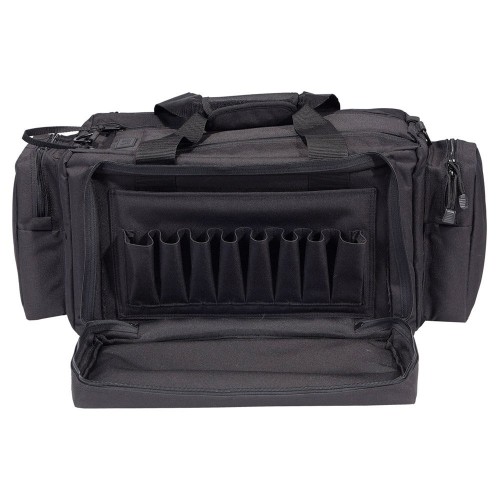 The 5.11 Tactical Range Bag on Amazon
The 5.11 Tactical Range Bag on Amazon
It holds a bunch of different magazines, several pistols in rugs, has pockets I can put splatter targets in, and a big center area where I can put extra sets of eye and hearing protection for any students that need them (I sometimes teach CCW classes), bi-pods for my AR-15’s, camera gear for when I take photos or video footage at the range – it’s great! I don’t put ammo in the bag – I bring a separate ammo can for that.
Initially I thought I’d need something smaller and more streamlined for 3 Gun, so I bought a second “range bag” which was intended to be both smaller and lighter. The more I shot 3 Gun, the more inadequate the bag was. For a pistol only competition, it would have worked. But once you start throwing in ammo for rifle, pistol, and shotgun, magazine holsters, transporting a pistol, eye and ear protection…yadda, yadda…a regular small range bag overflows quickly. So I started researching shooting bags designed with the needs of the competition shooter in mind.
G•Outdoors
My research quickly pointed me to a company called G•Outdoors and their G.P.S. shooting bags. They have several models in different configurations, but two in particular caught my attention. The first is the G.P.S. Handgunner backpack:
The G.P.S. Handgunner Backpack on Amazon
This product has become quite popular among competitive shooters, and I watched several YouTube reviews which had me pretty convinced this was the right solution for me. Then I noticed a guy at a match using one of the G.PS. shooting bags, but it wasn’t the Hangunner Backpack. Instead it was the G.P.S. Rolling Range Bag:
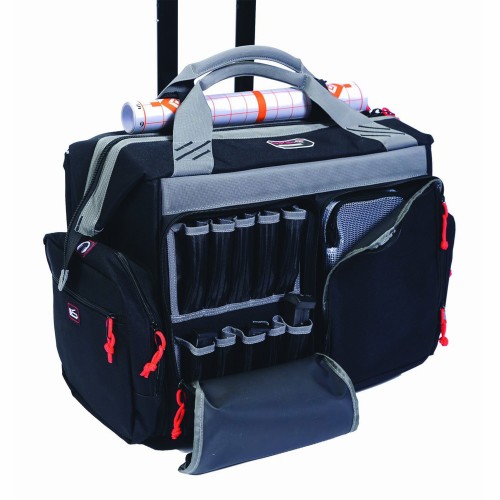 G.P.S. Rolling Range Bag
G.P.S. Rolling Range Bag
Having one to look at hands on was extremely helpful, but also very frustrating because I could see many advantages to the Rolling Range Bag (which I’ll call the RRB for short) over the Handgunner Backpack, not the least of which was it looked nice for when I traveled to classes. It was made just like a rolling piece of luggage, so traveling with it should be a breeze. NOTE: Speaking of travel, it should be noted that the label on the outside of both of these bags is a removable velcro patch, which is a GOOD thing. I wouldn’t want to have to board a plain with a big label on my bag that says anything about guns or shooting.
I couldn’t decide which one would be best, so I decided to order both from Amazon (I’m a Prime member so returns are super easy) – the price for each was pretty close to the same for each one – about $100.00.
For each bag, the black with gray and red accents was my preferred color option. At the time I placed my order, Amazon was out of stock on the black version of the Handgunner Backpack and only had the digital camo version. For the purposes of my catch-and-release comparison, this was fine. I was more interested in evaluating the features and storage capacity of the product than the color.
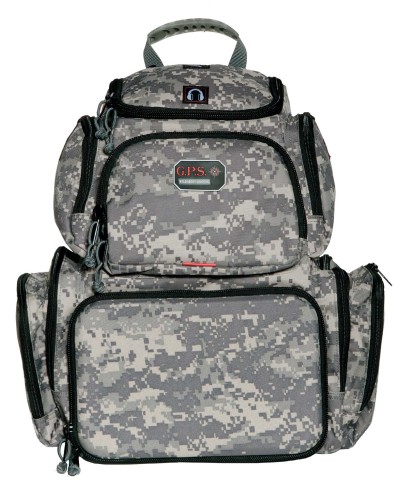 I was REALLY happy that I ended up ordering both because had I not done so, I would have always wondered if the one I didn’t order might have been the better choice. Having evaluated both against my specific needs, it was very clear that the Handgunner Backpack simply didn’t meet my requirements for 3 Gun competition. It’s actually quite a bit smaller than the RRB. If you’re only doing handgun related competition, this bag might well be perfect for you. The lower section with the pull-out foam pistol rack is a particularly slick touch. The big problem for me however is that I couldn’t really find a good place to store 75-100 shotgun shells. By comparison, the center compartment of the RRB is cavernous and could easily fit all the pistol, rifle, and shotgun ammunition I would need for a local match, or the ammo I might need for a training class. The downside however to the RRB as compared to the Handgunner Backpack is the fact that the RRB is quite a bit heavier. This makes perfect sense – one is designed to be carried, while the other is designed to be rolled. For me, in most cases the RRB will come out of my car and go right into my gun cart. So the weight issue doesn’t particularly matter for me.
I was REALLY happy that I ended up ordering both because had I not done so, I would have always wondered if the one I didn’t order might have been the better choice. Having evaluated both against my specific needs, it was very clear that the Handgunner Backpack simply didn’t meet my requirements for 3 Gun competition. It’s actually quite a bit smaller than the RRB. If you’re only doing handgun related competition, this bag might well be perfect for you. The lower section with the pull-out foam pistol rack is a particularly slick touch. The big problem for me however is that I couldn’t really find a good place to store 75-100 shotgun shells. By comparison, the center compartment of the RRB is cavernous and could easily fit all the pistol, rifle, and shotgun ammunition I would need for a local match, or the ammo I might need for a training class. The downside however to the RRB as compared to the Handgunner Backpack is the fact that the RRB is quite a bit heavier. This makes perfect sense – one is designed to be carried, while the other is designed to be rolled. For me, in most cases the RRB will come out of my car and go right into my gun cart. So the weight issue doesn’t particularly matter for me.
Both bags also feature the G.P.S. “Visual ID Storage System.” Essentially they’ve sewn on little identifying icons on many of the pockets and pouches on the bags which identify what each pocket contains. In theory, it’s a pretty good idea. What would have made it even better executed is if some of the pockets with Visual ID Storage tags on them were not sewn on but rather had hook and loop. This would give you flexibility in configuring your bag in a way that works best for your gear. As it stands, if I for example can’t fit my tool kit in the pocket they have identified for tools, and instead have to put them in the pocket they have identified as for binoculars, I have to always remember the Visual ID Storage tag really means tools, and the tag for tools means something else altogether. Not really much help. If the tags were affixed via hook and loop like patches, I could just switch the tags around as needed.
Below is a video showcasing the features of both the G.P.S. Rolling Range Bag and the G.P.S Handgunner Backpack. I load up the RRB and show how it’s much more well suited for transporting the gear I need for a 3 Gun Match:
Both G.P.S. bags are very well constructed but for my needs, the Rolling Range Bag was the best choice.

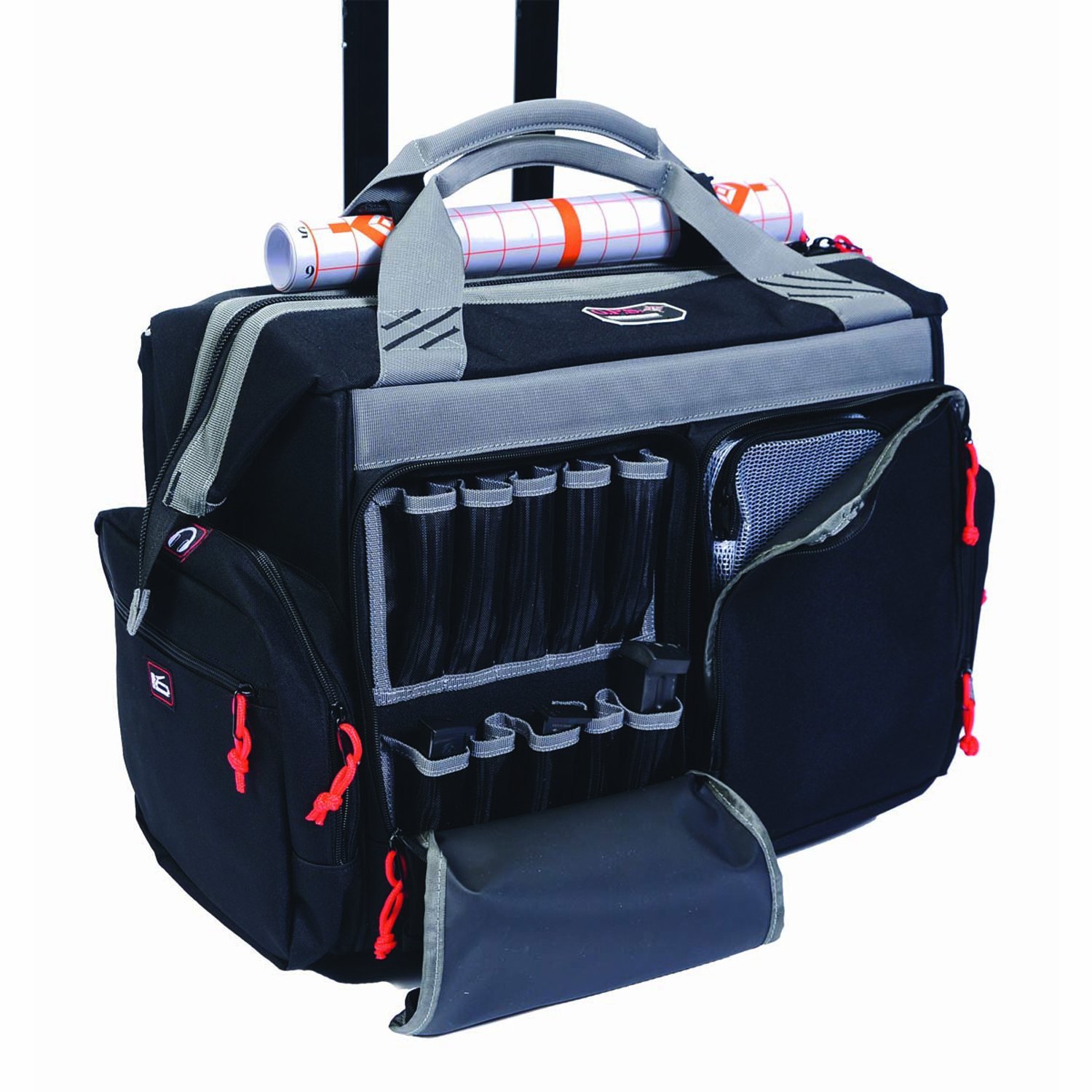
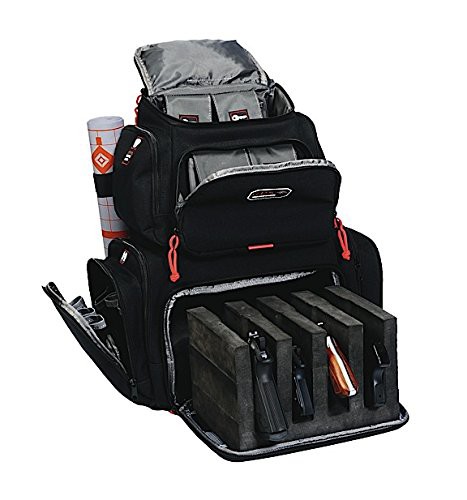
0 Comments
Trackbacks/Pingbacks